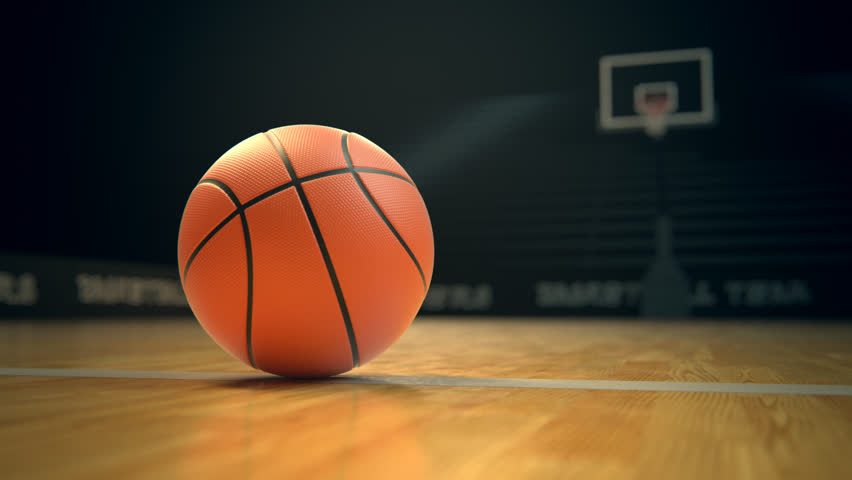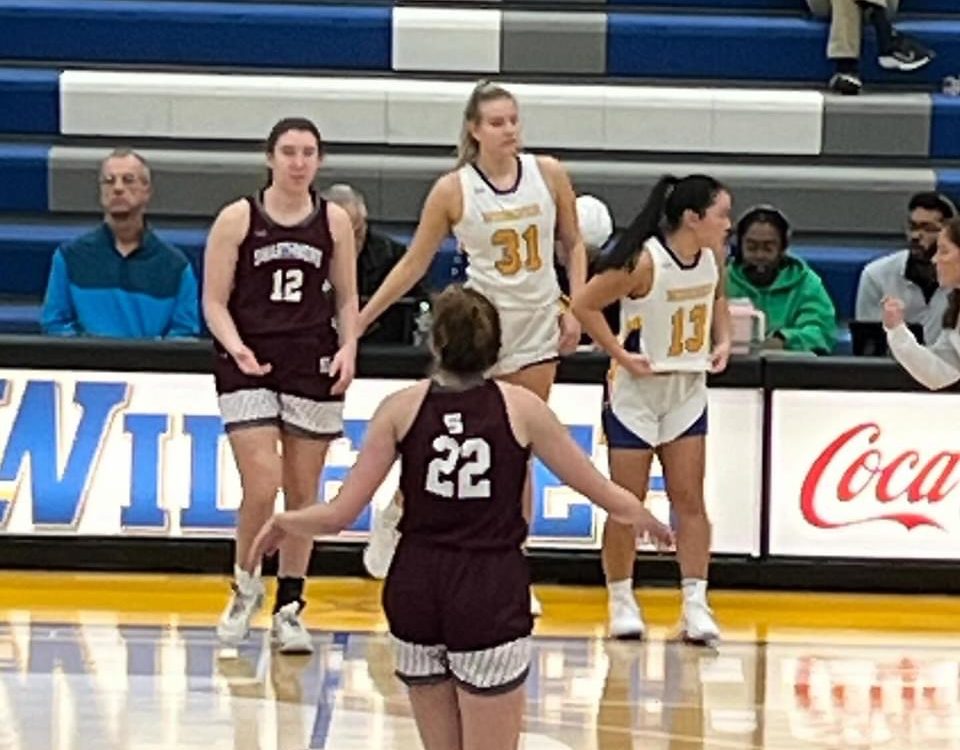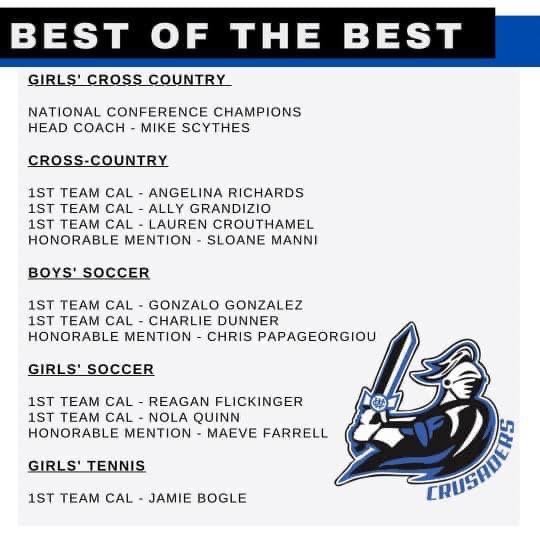
Crusaders sweep Cape Tech; Thweatt honored
January 31, 2019
Middle takes defensive battle over Wildwood, posts 10th straight win
February 1, 2019COMMENTARY: Like it or not, transfers will always be a part of high school athletics

By BRIAN CUNNIFF
“The NJSIAA really needs to do something about all these transfers.”
It’s the line heard constantly around the high school sports scene every time a talented athlete leaves one school and enrolls in another.
The latest transfer saga involves Lower Cape May sophomore Martin Anguelov, who withdrew from Lower Cape May last week and registered at Wildwood Catholic. He is ineligible to play basketball for the Crusaders for the rest of this season due to two provisions in the New Jersey State Interscholastic Athletic Association (NJSIAA) transfer rule, after averaging 21.7 points through 15 games for the Caper Tigers.
The NJSIAA – which is essentially an organization made up and run by its member schools – has been wrestling with transfer issues for years. Some high school sports fans in Cape May County think the amount of transfers occurring around these parts nowadays has gotten out of hand. The truth is, there is so much transferring going on in North Jersey each year that it seems like a rite of passage for a top-level athlete in that region. There is even a high school website that did its best to list all of the basketball transfers across the state prior to the season. The number of players on that list was quite striking.
The NJSIAA has attempted to craft rules that might curtail the rampant transferring of athletes. There is currently a 30-day sit-out period for any transfer who played at the varsity level at his or her previous school who does not have what is termed as a “bona fide” change of address. There is a new rule that states that any in-season transfer is ineligible for the state playoffs in that same season.
In addition, any transfer deemed for athletic advantage is illegal and could lead to an athlete being declared ineligible for an entire calendar year if a challenge is made and upheld. The problem there, however, is proving such a scenario, even though – let’s be honest here – a healthy portion of these transfers are for athletic advantage, even if other factors are also involved.
There have been other proposals brought forth that haven’t gotten enough support to become ratified.
So the NJSIAA has tried and is trying to do something. Is it enough? Some say no.
But what else can it do? The NJSIAA does not have an investigative team that has the time or the resources to review every athletic transfer that occurs across the state, so the issues are left for the member schools to deal with. Most schools who lose transfers simply have the attitude that if an athlete doesn’t want to be there then it’s best to just let him or her go and move on. In addition, deep down, most schools don’t want to hurt a teenager’s chances of losing even more eligibility time so they rarely challenge a transfer, even if they feel there might have been recruitment of said player or if they feel the transfer was done for athletic advantage.
Midseason transfers bring even more issues to the table, because the NJSIAA transfer rules create unintended consequences. A transfer leaving midseason so he or she can be fully eligible for the following season by starting the clock on his or her 30-day sit-out period not only often loses his or her chance to play in that season, but he or she also can adversely affect the fortunes of the team he or she is leaving.
And just where does the boys basketball program at Wildwood Catholic fall in all of this?
Anguelov is the fourth transfer in the last two years to come into its program. There have been quite a few others over the last eight to 10 years as well, more than a couple in midseason. Ask some of the Wildwood Catholic haters around the county and they can probably concoct some wild story about how Player X’s family was offered free tuition, a 54-foot yacht and a waterfront condominium by the program’s boosters in order to entice them to their school. All that preposterous stuff.
Many of those same people don’t like that people associated with Wildwood Catholic’s program are attending dozens of grammar school basketball games in the area each year. Is recruiting going on? It could depend on how you define recruiting. But remember, non-public schools don’t exist if they can’t recruit students. Some of those students happen to be athletes. That said, they aren’t in the gym to see the cheerleaders perform, even though some of those cheerleaders could be potential students as well.
Wildwood Catholic supporters will say that student athletes want to come to their school because of all the academic, social and religious opportunities it offers in addition to their athletics programs. That’s true in a lot of cases. Is it true in all cases? That’s debatable. But why is it someone else’s right to question why an athlete wants to attend a certain school anyway?
There’s no question Wildwood Catholic’s recent success is attracting student athletes. Good basketball players want to play in organized, successful programs that will help their development as a player and as a person and, for the few good enough to play beyond high school, provide them exposure to college scouts. Wildwood Catholic’s program offers that. There’s nothing wrong with wanting to be a part of that kind of environment.
But here’s where one of the bugs in the transfer system occurs.
The only requirement to meet to transfer into a non-public school is possessing the financial wherewithal to pay tuition. There are no school district boundaries to abide by, just an ability to pay.
A public school rarely has such a luxury when it comes to transfers. If an athlete wants to transfer to a public school that’s not in his or her school district, in most cases he or she must move with their family into that school district or go through the arduous process of attempting to enter as a choice school student (if that school even offers such a program). Then there’s the sinister route of coming up with some kind of “fake” address within that school district, which is not only against NJSIAA rules but is also against the law. (But trust me, it’s been done before.) Some public school districts may accept tuition-paying students, but that cost is often much higher than that of a non-public school.
To put it simply, if your family has the money, it’s pretty darn easy to transfer into a non-public school. Not so easy to transfer into a public school. If you’ve ever seen the aforementioned website listing of basketball transfers, you’d notice the majority were transferring into non-public schools.
Not all athletes face the same restrictions when it comes to transferring, either. For example, children of divorced or separated parents who live in separate school districts have a distinct advantage. Let’s say a great football player lives with mom and attends a school that has a football program in which he feels he’s not enjoying the experience and/or thinks the experience at the school in dad’s district is better. All that player needs to do is change his residence to his father’s. The player would lose no eligibility. Such a move has been made many, many times over the years by a countless number of high school athletes. The athlete whose parents are together gets no such luxury.
There’s a big-picture problem when it comes to transferring for athletics. Many times, the transfer is doing so because he or she is dissatisfied or unhappy with his or her current situation, whether it’s playing time, not getting along with teammates, lack of team success or a personality conflict with a coach. Too often in today’s society, the popular move is to run away from that adversity and go somewhere else instead of facing it and making the best of it. The life lesson that could be learned there is completely lost.
There are many college coaches, especially at levels lower than Division I, who preach to their recruits that they should choose a school for much more than just athletic reasons. Because if the basketball or football or whatever sport they play doesn’t work out for them, then they’re going to be miserable remaining at that school and the chances of dropping out become much higher than usual.
Unlike AAU, it’s kind of difficult to run from one program to the next every year. Perhaps that AAU culture has helped foster this epidemic of high-profile athletes transferring at high rates in the first place.
If you’re choosing a high school simply for athletics, you’re choosing it for the wrong reason. You should do your due diligence when researching which high school to attend to best ensure a well-rounded experience not only athletically, but academically, socially and, if applicable, spiritually. I would argue that you should also live with that decision for the next four years and not run away when the going gets tough or the sports teams look better elsewhere, but at the same time it’s also not my right to tell someone else what’s best for him or her. But I steadfastly believe the life lessons learned by battling through the inevitable adversity that will come in a variety of circumstances as a high school student will pay off tenfold in the long run.
All that said, there is an argument to be made that transferring for athletic reasons shouldn’t be as big of a deal as some make it out to be. For example, let’s say your child is a talented musician. Wouldn’t it behoove you to try to find the school with the best music program? If an extraordinarily accomplished piano player transfers high schools because he or she thinks they’ll get more out of the music program at another school, no one says a word and the said pianist doesn’t have to “sit out” from performing for 30 days. But if a basketball player who might not even be good enough to play past high school decides to transfer to another school, there are people calling for Woodward and Bernstein to come investigate the how and why that athlete came to transfer.
Getting back to the case of Anguelov, he and his family made a decision they feel is best for him. What gives others the right to question it? And, if he transferred to, say, Cape May Tech, would it have been as big of a deal? Certainly not. But because it’s Wildwood Catholic, some people are outraged because it’s a case of the rich getting richer when it comes to the talent level in its boys basketball program.
The fact is, transfers are never going to be stopped completely. If the NJSIAA comes up with a different or more sophisticated transfer rule, athletes and their families will still figure out a way to circumvent it if they want to leave one school for another. It’s been going on for years and it’s not going to stop.
Like it or not, transfers are part of the fabric of high school sports.




